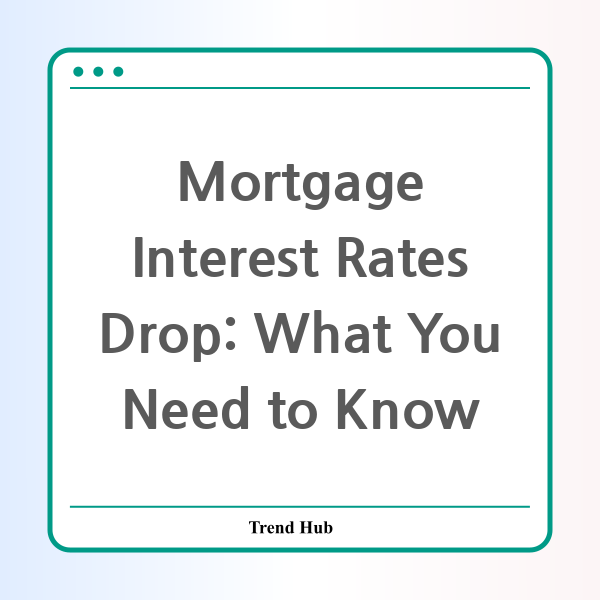* This website participates in the Amazon Affiliate Program and earns from qualifying purchases.

Are you considering buying a home or refinancing your mortgage? Recent trends indicate that mortgage interest rates are finally making a downward move, providing a potential opportunity for buyers and homeowners alike. If you’ve been waiting for the right moment to jump into the housing market, it might just be here. Let’s delve into the latest changes and what they mean for you.
According to the latest data, the 30-year fixed mortgage rate has decreased by 20 basis points to 6.39% this week. The 15-year interest rate has also seen a decline, now sitting at 5.72%. These decreases come as the spring home-buying season kicks off, making it an exciting time for prospective buyers.
Here’s a breakdown of the current mortgage rates:
| Loan Type | Current Rate |
|---|---|
| 30-year fixed | 6.39% |
| 20-year fixed | 6.01% |
| 15-year fixed | 5.72% |
| 5/1 ARM | 6.48% |
| 7/1 ARM | 6.42% |
| 30-year VA | 5.91% |
| 15-year VA | 5.54% |
| 5/1 VA | 5.93% |
| 30-year FHA | 5.95% |
| 5/1 FHA | 5.69% |
Accompanying these lower mortgage rates are the refinance rates. Here’s how they stack up:
| Loan Type | Current Refinance Rate |
|---|---|
| 30-year fixed | 6.43% |
| 20-year fixed | 6.09% |
| 15-year fixed | 5.79% |
| 5/1 ARM | 6.72% |
| 7/1 ARM | 6.68% |
| 30-year VA | 5.99% |
| 15-year VA | 5.83% |
| 5/1 VA | 5.94% |
| 30-year FHA | 6.05% |
| 15-year FHA | 5.62% |
| 5/1 FHA | 5.63% |
While these rates are enticing, it’s important to note that they are national averages, and your specific rates might differ based on various factors such as your location, credit score, and down payment. Typically, the more you can put down and the higher your credit score, the better interest rates you’ll receive.
If you’re contemplating whether to go for a 30-year or a 15-year mortgage, there are several factors to weigh. A 30-year mortgage tends to offer lower monthly payments, making it a popular choice for many buyers. For example, a $300,000 loan at a 6.39% interest rate would result in a monthly payment of approximately $1,875, but over the lifetime of the loan, you’d pay around $374,839 in interest.
On the other hand, a 15-year mortgage at a 5.72% rate would increase the monthly payment to around $2,486, yet you’d only pay $147,554 in interest over the years. The difference in interest paid can be significant, so it’s crucial to assess your financial situation and long-term plans before making a decision.
Another option is the adjustable-rate mortgage (ARM). These loans typically begin with lower rates, making them attractive initially. For instance, a 5/1 ARM offers stability for the first five years before the rate may adjust annually. If you plan on selling your home before the adjustment kicks in, an ARM might be a good fit for you. However, always consider the risks involved with potential rate increases down the line.
With spring in the air, it’s an opportune time to consider entering the housing market. As more homes become available, paired with attractive mortgage rates, potential buyers can find favorable deals. Make sure to explore different lenders for the best rates and consider options such as buying down your interest rate at closing. This can help lower your rate but be mindful of the overall costs involved.
In conclusion, the current trend in mortgage interest rates indicates a positive direction for buyers. Whether you’re looking to purchase or refinance, make sure to conduct thorough research and consult with financial advisors to ensure you’re making the right decision for your situation. Happy house hunting!
* This website participates in the Amazon Affiliate Program and earns from qualifying purchases.